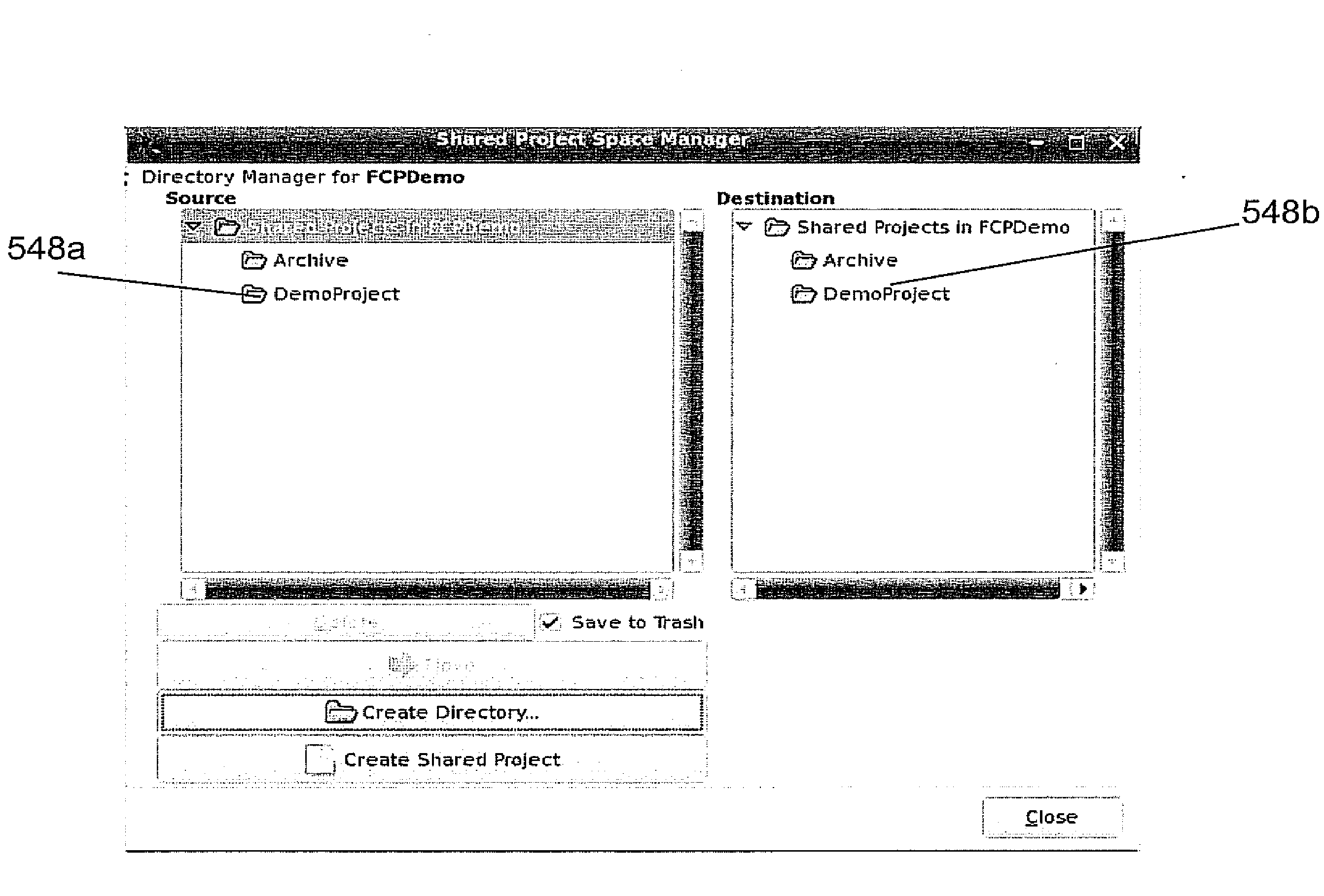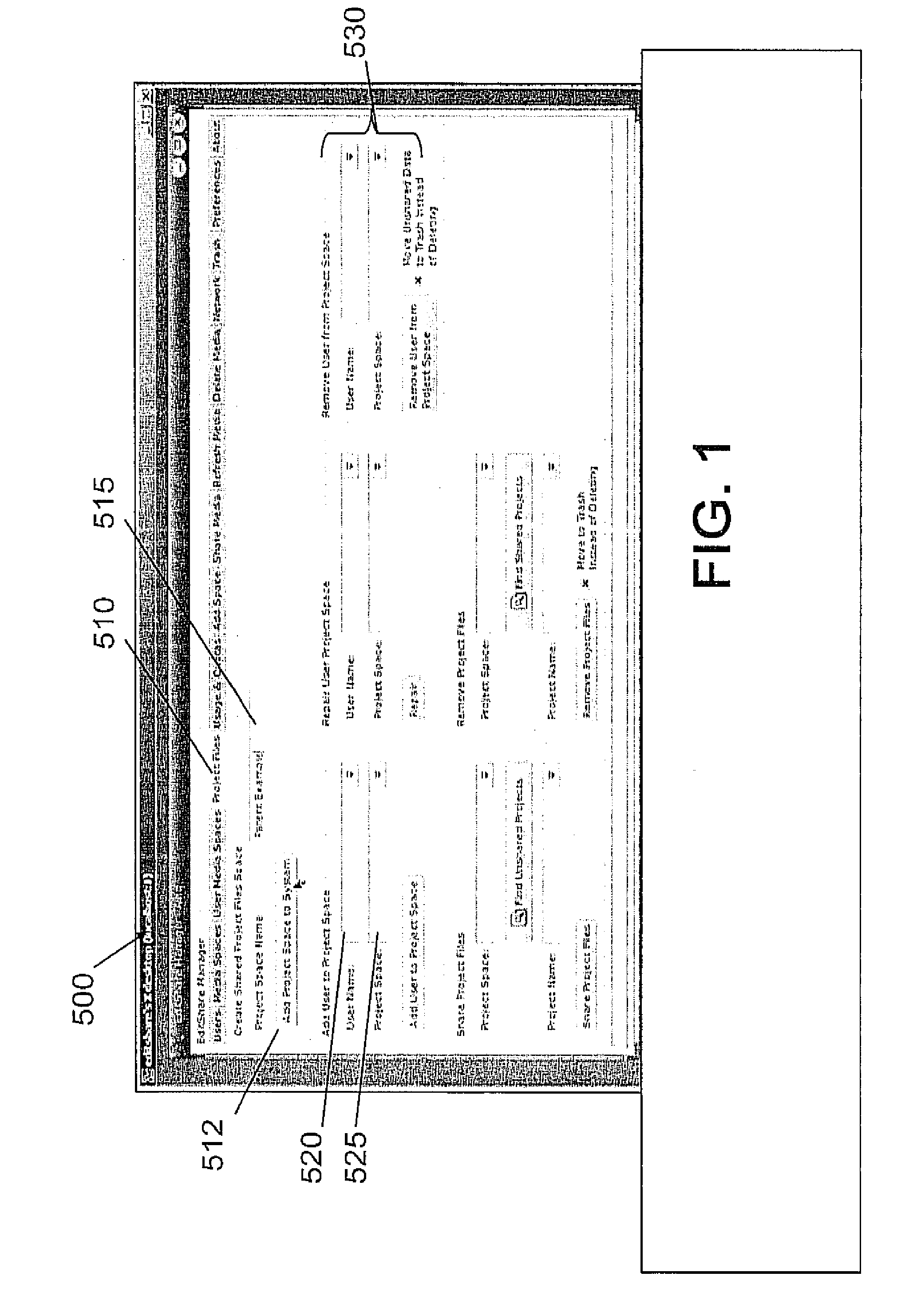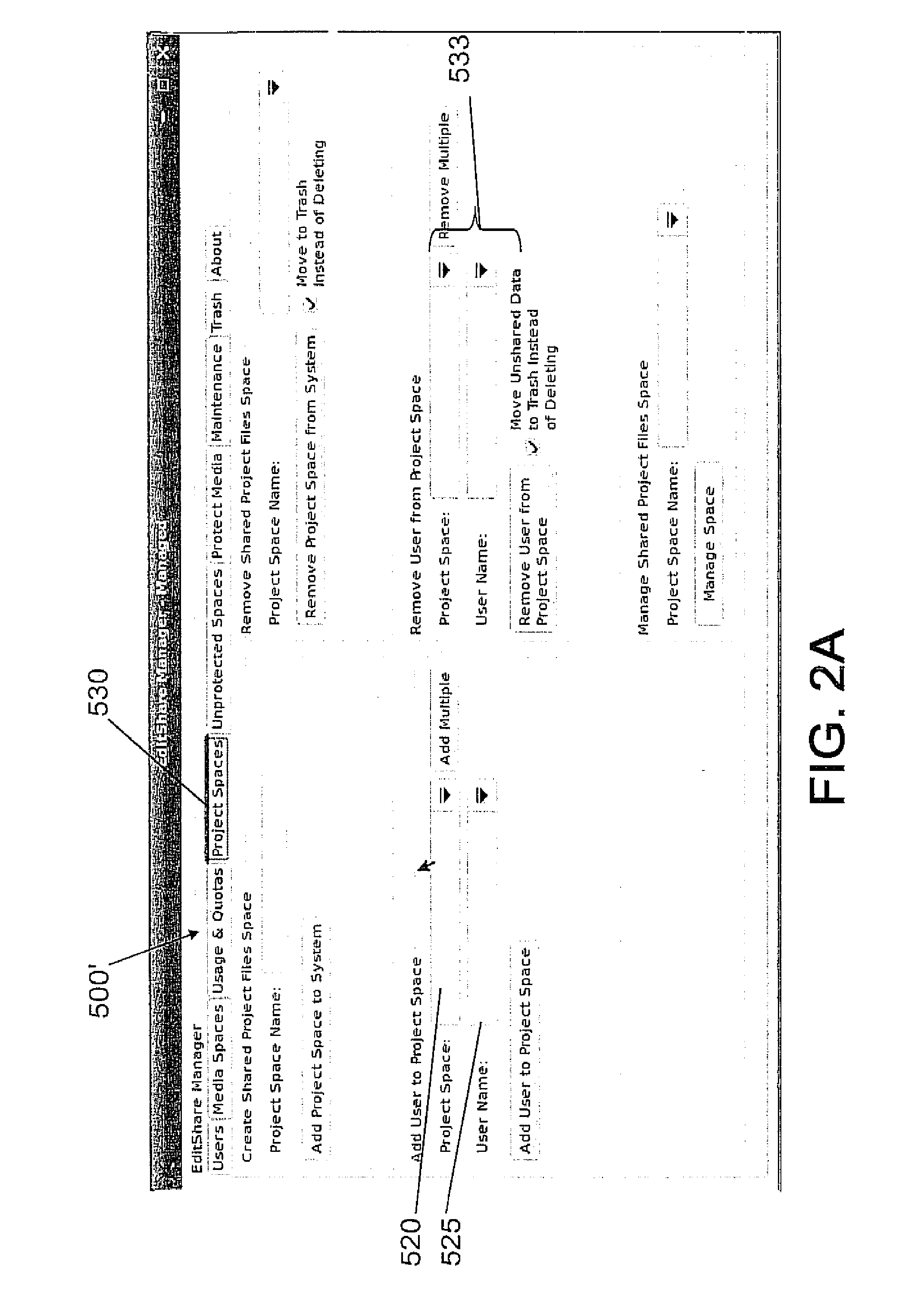Novel media file access and storage solution for multi-workstation/multi-platform non-linear video editing systems
a multi-workstation, non-linear technology, applied in the direction of electronic editing digitised analogue information signals, instruments, carrier indicating arrangements, etc., can solve the problems of one editor being at great risk of overwriting the changes of others, and vice versa, and it is difficult to sort out what was being edited by which editor
- Summary
- Abstract
- Description
- Claims
- Application Information
AI Technical Summary
Benefits of technology
Problems solved by technology
Method used
Image
Examples
Embodiment Construction
The present invention is a system and method that enables an NLE system such as, Apple's Final Cut Pro® video editing program, that natively provides a scheme for storing a video editing “Project” as a single “monolithic” file, to be used in a collaborative editing environment. Under normal and generally accepted practice, when using such NLE programs and storing their Project data, it is not possible to give different editors control over different parts of the same Project because at the filesystem level of a computing environment, those NLE applications define Projects as the metadata contained in just one single file.
That is, unlike the AVID® Non-Linear Video Editing application whose “Projects” are comprised of metadata that includes bins and sequences and “clips” that all refer to discrete media files that can be manipulated individually and assigned write permissions differently, and whose created Project data is not stored in single monolithic files, Apple's Final Cut Pro® s...
PUM
 Login to View More
Login to View More Abstract
Description
Claims
Application Information
 Login to View More
Login to View More - R&D
- Intellectual Property
- Life Sciences
- Materials
- Tech Scout
- Unparalleled Data Quality
- Higher Quality Content
- 60% Fewer Hallucinations
Browse by: Latest US Patents, China's latest patents, Technical Efficacy Thesaurus, Application Domain, Technology Topic, Popular Technical Reports.
© 2025 PatSnap. All rights reserved.Legal|Privacy policy|Modern Slavery Act Transparency Statement|Sitemap|About US| Contact US: help@patsnap.com



